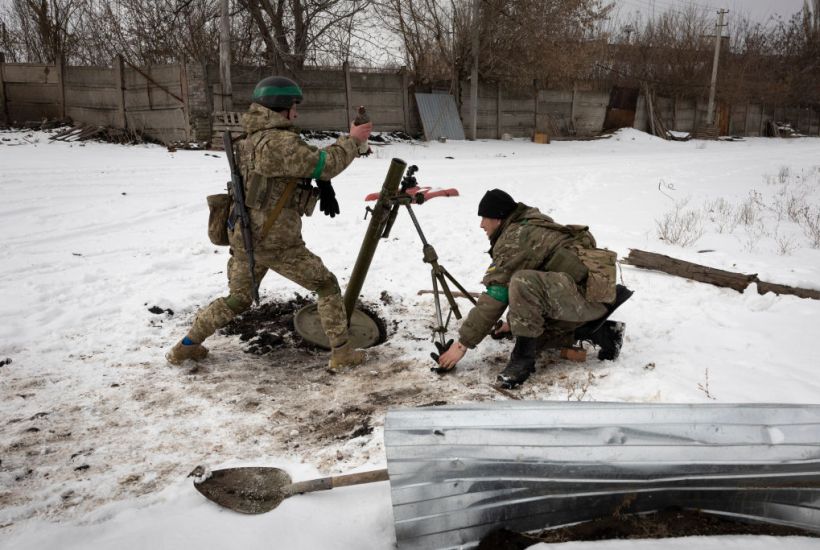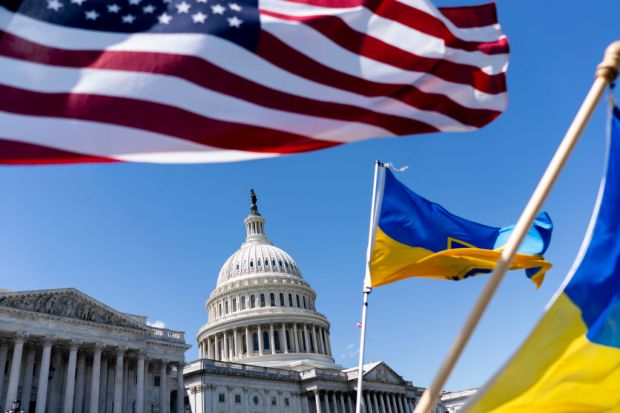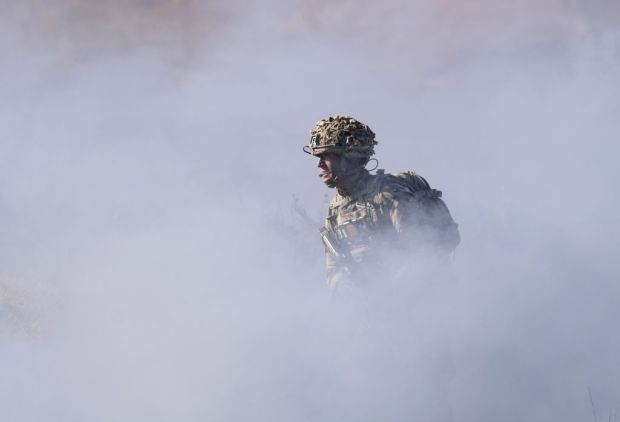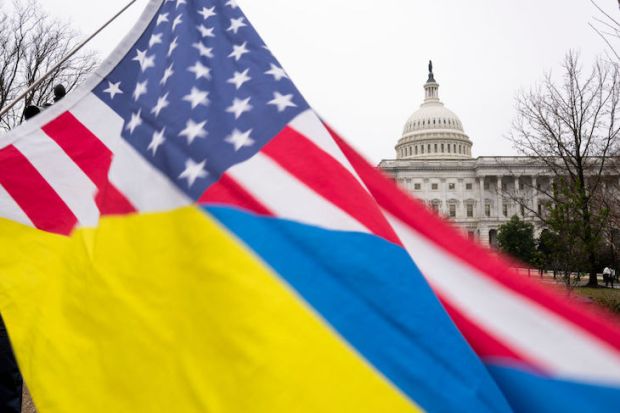Russia’s winter offensive appears to have begun with a decidedly underwhelming series of operations in the Donbas. So far results have ranged from grinding and very costly victories in the towns of Krasna Hora and Soledar, to an outright disaster at Vuhledar where most of Russia’s 155th Naval Infantry Brigade was destroyed, and its commanding officer killed, after becoming stuck and then fixed by artillery fire in the middle of recently re-laid Ukrainian minefields.
Meanwhile, a long-running operation by Wagner mercenary troops to take the partially encircled town of Bakhmut continues, and Russian forces are making probing attacks as far north as the Russian border near Kharkiv oblast and as far south as Zaporizhzhia oblast.
For the moment Ukrainian defensive lines are broadly holding, and the limited Russian successes that continue to pile pressure on the almost encircled town of Bakhmut are coming at the cost of heavy casualties. It would be a mistake though for the West to underestimate Russia at this stage of the war.
The key question now is whether the Ukrainian army can hold back Russia’s remaining winter offensive without committing most of the reserve units it has been building up since December. That will, in turn, dictate how many trained formations equipped for mobile armoured warfare will be available for Kyiv’s own counter-offensives in spring and summer.
Ukraine can win on the battlefield if the West accepts that it must urgently bolster Ukraine’s supplies of ammunition, armoured vehicles, artillery pieces and training.
Nato casualty estimates from early February quoted by the Norwegian Chief of Defence suggest Russia has lost a staggering 180,000 soldiers killed, badly wounded and captured since the start of the invasion, while Ukraine has lost around 100,000 soldiers, with another 30,000 civilians killed.
The ratio of killed Russian soldiers compared to those wounded and captured has also been extraordinarily high compared to normal historical patterns. This is due to poor casualty-evacuation procedures; frontline first aid training and equipment among most Russian units; coupled with the inherent lethality of modern artillery and anti-tank weapons. When you count those killed, wounded and captured, Russia has lost more troops now than the 150,000 it used to invade Ukraine in February last year.
Despite the large size of its population, Russia’s decision to only start mass mobilisation in September last year means that it is currently short of usable troops. In October 2022 around 300,000 conscripts were called up by Russia. About half were sent almost straight to the frontlines to try and stem Ukrainian advances in Kharkiv and Kherson. Those troops received very limited training, often had poor equipment, and have spent a miserable winter on the frontlines. The influx of these conscripts did help stabilise Russia’s lines after the retreat from Kherson, but these units are not capable of large-scale offensive action. The other 150,000 conscripts called up last year though have been training as fresh units in Russia and Belarus. They are now being committed to offensive action alongside the convict-bolstered mercenary forces of the Wagner Group.
Ukraine mobilised around 700,000 people in February last year when it was attacked but has only been able to field fewer than half that number as usable troops due to equipment and ammunition limitations. But, thanks to sustained Western support – particularly in terms of artillery and the vast quantities of ammunition and spare barrels required to use it effectively – Ukraine currently has an edge in terms of firepower over Russia in key areas. Meanwhile, Russian industrial production was only recently put onto a war footing, so after massive artillery usage over the past year, Russian forces are now suffering from serious ammunition shortages. In the short term it is, therefore, likely to work to Ukraine’s advantage if Russian forces keep attacking, because the attacking force almost always has significantly heavier casualties especially in the relatively static, artillery dominated warfare that currently characterises the fighting in the Donbas.
Unfortunately though, Ukraine is unlikely to be able to simply bleed Russia dry or force it to retreat through an attrition-based strategy in the medium or long term. The war is now seen as existential by President Putin and his immediate security elite. After over a year of intensive propaganda, they have deliberately reframed their ill-judged and unprovoked invasion as a generation-defining confrontation with the West. This is, after all, the only way they can attempt to justify the huge casualties, overt military aggression, political isolation and economic hardship involved to the Russian people. Russia’s leadership is settling down for a long grinding war and has already primed its population to accept huge casualties and costs. Furthermore, Moscow’s political demands for any ceasefire have increased, rather than decreased, despite its setbacks on the battlefield.
While the Russian army has taken appalling casualties and suffered three major retreats since February last year, it is still fighting and still slowly taking ground back. Well publicised problems with poor equipment and training for conscripts hide the broader picture of rearmament at scale and a Russian army that is unfortunately learning and adapting, despite the force’s dysfunctional structure.
Russia’s ability and will to continue aggressive offensive action despite staggering casualties is a measure of the grim resolve that Ukraine, and the West more broadly, now faces. There will be additional mobilisation waves in Russia to generate more conscript troops. They will take six to eight months to train and equip, but over time Russia will continue to renew its depleted manpower on the battlefield.
The Russian defence industry is belatedly being put onto a war footing, with production concentrating on fewer and slightly lower-tech models of vehicles, ammunition and weapons in order to increase output. This too will take months to have any effect, but by the end of 2023 the Russian army may well be recovering from its current manpower, equipment and ammunition shortages. The window for Ukraine to make decisive territorial gains is a finite one, which means Kyiv must risk committing to major counter-offensives this spring and summer.
Ukraine’s most valuable offensive tools are brigades that have been trained and equipped to conduct combined-arms manoeuvre warfare, where tanks, armoured personnel carriers, artillery and infantry are used together at scale. Ukraine’s relatively few mobile brigades were instrumental in crushing the Russian air assault at Hostomel in the first days of the war, and in the very successful Kharkiv counter-offensive last autumn. However, their consistent use in high-tempo combat operations has resulted in significant attrition in these units. Ukraine has therefore been focusing on reinforcing and rebuilding them over the winter in preparation for renewed counter-offensives in the spring. This is where western supplies of main battle tanks like the Leopard 2 and infantry fighting vehicles like the M2 Bradley will be crucial.
Ukraine can win on the battlefield this year if the West accepts that it must urgently bolster supplies of ammunition, armoured vehicles, artillery pieces and training. Additional air defence equipment and/or western fighter aircrafts – like the Swedish Gripen that can operate from dispersed bases with limited maintenance support are also crucial to keeping the Russian Air Force ineffective on the battlefield.
Reaching the required level of support will mean spending significant sums to order immediate replacements for the materiel western forces give away, since at this stage it will have to involve stripping out equipment from Nato’s own frontline forces. It is worth remembering, however, that this equipment was generally procured to defend against Russia, and currently the best place for it to accomplish this is in Ukraine.
There is nothing that any democratic Ukrainian government could offer, nor that the West would accept, that will convince Russia to stop its renewed mobilisation and rearmament activities. Even a negotiated ceasefire will only last until Russia feels ready to go back on the offensive. However the fighting eventually ends, Ukraine will continue to need western support to prevent a second Russian invasion six months down the line once the Russian army has had time to recover, but before Ukraine has had a chance to rebuild and arm its forces with western equipment and new training practices. This long term western support will be much cheaper and more politically palatable if Ukraine is able to take back most or all of its lost territory this year, while Russia is comparatively weak.
If, on the other hand, Ukraine is only given enough support to maintain its current position this year and the war continues, then in 2024 the West will be left with little practical choice other than to continue to support, but from a much weaker position facing a more confident Russia. Reducing support for Ukraine because of the cost and political difficulties in 2024 would essentially mean that despite never clashing on the battlefield, Russia would have defeated Nato in terms of political willpower, societal resilience and industrial capacity. The deterrence implications of such a defeat for the West would be profound, dangerous and extremely expensive.
Russia can be beaten on the battlefield this year, and deterred from future aggression, but only if Europe stops underestimating Russian resolve; accepts that it is in a long-term military contest with an aggressive and determined enemy; and invests now in industrial capacity and support to Ukraine at the scale that the stakes demand.
For those that baulk at the monetary cost, it is worth remembering that the money would be spent on investment in ammunition and equipment factories, creating high-skilled jobs in the UK and other European countries. This is in sharp contrast to the cost in lives and devastation that Ukrainians continue to pay every day.
Got something to add? Join the discussion and comment below.
Get 10 issues for just $10
Subscribe to The Spectator Australia today for the next 10 magazine issues, plus full online access, for just $10.



















Comments
Don't miss out
Join the conversation with other Spectator Australia readers. Subscribe to leave a comment.
SUBSCRIBEAlready a subscriber? Log in